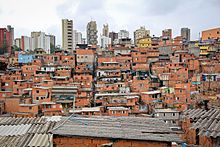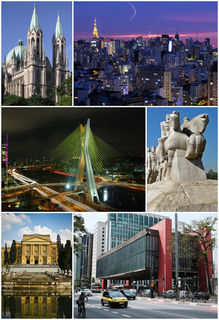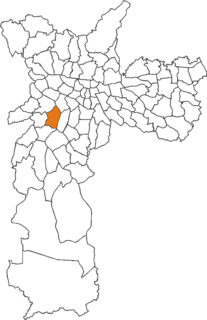
The Estádio Cícero Pompeu de Toledo, widely known as Morumbi, is a football stadium located in the Morumbi district in São Paulo, Brazil. It is the home of São Paulo Futebol Clube and its formal name honors Cícero Pompeu de Toledo, who was São Paulo Futebol Clube's chairman during most of the stadium construction and died before its inauguration. Morumbi is the largest privately owned stadium in Brazil. The stadium was designed by the architect João Batista Vilanova Artigas.

São Caetano do Sul is a city in São Paulo state in Brazil. It is part of the Metropolitan Region of São Paulo. The population is 158,024 in an area of 15.33 km2. It is the city with the highest per capita income in Brazil and it also has the highest Human Development Index.

Associação Escola Graduada de São Paulo, most commonly referred to as Graded School, is an American school in São Paulo, Brazil. The school opened on October 17, 1920, in a small schoolhouse on Avenida São João, and in 1961 the current campus was built on Avenida Giovanni Gronchi, in a terrain now facing the slum of Paraisópolis, located in Morumbi. Although the school is located near the Paraisópolis favela, it is fortified with high levels of security to deal with possible threats.
Cemitério do Morumbi is a cemetery in São Paulo, Brazil. It is located in the affluent neighborhood of Morumbi.

Daslu is an upmarket multi-brand boutique-department store in São Paulo, Brazil. The boutique is known as the "fashion designers mecca" of Brazil as it houses more than 60 labels plus 30 store-in-stores and is the place where Brazilian socialites, ranging from multi-millionaire soccer players to conglomerate bigwigs shop for the latest accessories and clothing. It is also a renowned shopping institution in South America for being a "purveyor" in chic and exclusive couture. The brand "Daslu" is a reference to the nickname "Lu" that was common to both partners who founded the store.

The 2000 FIFA Club World Championship was the inaugural FIFA Club World Cup, the world club championship for men's club association football teams. It took place in Brazil from 5 January to 14 January 2000. FIFA as football's international governing body selected Brazil as the host nation on 3 September 1997 as the bid was found to be the strongest among nine candidates. The draw was made at the Copacabana Palace in Rio de Janeiro on 14 October 1999. All matches were played in Rio de Janeiro's Estádio do Maracanã and São Paulo's Estádio do Morumbi.

Mooca from tupi mo-oka, meaning to build houses, is a district in the subprefecture of the same name in the city of São Paulo, Brazil. Mooca today is home to over 75,000 inhabitants, spread in its 7.7 square kilometres (3.0 sq mi). It is also considered one of the fastest growing districts in the city, experiencing over the last years a vigorous momentum in the construction industry. Mooca has been the stage for many social movements, specially because of the presence of a strong influence of the industry interests in the political scene of São Paulo towards the end of the 19th century and the beginning of the 20th century. The composition of Mooca's economy today ranges from small businesses ran by locals, large industries, such as Lorenzetti and Groupe SEB, both important players locally and globally in the home appliances industry, and ultimately, large shopping malls offering a variety of services.
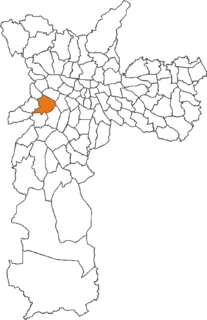
Butantã is a district of the city of São Paulo, Brazil. It is part of the homonymous subprefecture, located on the west bank of the Pinheiros River.
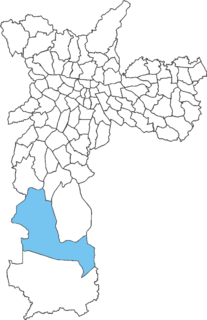
Parelheiros is one of 96 districts of the city of São Paulo. Located in the subprefecture of Parelheiros in the extreme south of the city, it is one of the largest and most rural districts. Very little of this area is inhabited, and is covered with reserves of the Atlantic Forest. In Parelheiros there are also two indigenous villages of a Guaraní subgroup with about one thousand residents. The region also received many German immigrants in the beginning of 1800. The inhabitants of the place have the lowest purchasing power of the city. The district is poorly served by public transport and roads; there is little connection to the central districts of the city.
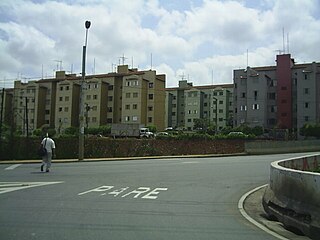
Heliópolis is a favela at the district of Sacomã in São Paulo.
The expression Morumbi may refer to:

Colégio Visconde de Porto Seguro is a private bilingual school located in the neighborhood of Morumbi, in São Paulo, Brazil. The school was founded in 1878 by German immigrants, who wished a school in which their children could learn about German culture, without losing the connection with Brazil. It was elected by Veja magazine as the best school of São Paulo. Nowadays, the school has several other related units. Its main unit had the 149th best national performance at the 2014 ENEM in a ranking of 15640; the Panamby unit was ranked at 236 and the Valinhos unit had the 67th best performance.
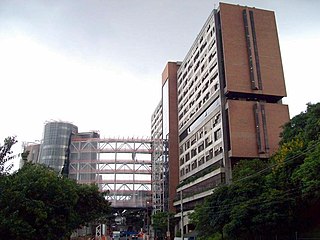
The Hospital Israelita Albert Einstein is a Brazilian hospital, located in the Morumbi district, on the south side of São Paulo. It's considered one of the best hospitals in Latin America.

The Subprefecture of Butantã is one of 32 subprefectures of the city of São Paulo, Brazil. It comprises five districts: Butantã, Morumbi, Vila Sônia, Raposo Tavares, and Rio Pequeno. It hosts the main campus of University of São Paulo and the headquarters of São Paulo Futebol Clube, one of the largest teams of the city. The headquarters of Rede Bandeirantes, one of the largest media groups of Brazil, are also in this subprefecture.

The Subprefecture of Campo Limpo is one of 32 subprefectures of the city of São Paulo, Brazil. It comprises three districts: Campo Limpo, Capão Redondo, and Vila Andrade. The slum of Paraisópolis, the second largest of the city and surrounded by middle-to-upper class apartment buildings, is located here.
The 2003 Campeonato Paulista de Futebol Profissional da Primeira Divisão - Série A1 was the 102nd season of São Paulo's top professional football league. Corinthians won the championship by the 25th time. Botafogo-SP and Internacional de Limeira were relegated.

I Love Paraisópolis is a Brazilian access prime telenovela created and written by Alcides Nogueira & Mário Teixeira and directed by Wolf Maya, premiered on May 11, 2015 on Rede Globo at 7:35 p.m. / 8:10 p.m. (BRT/AMT).
Hélio Júnio Nunes de Castro, simply known as Helinho, is a Brazilian professional footballer who plays for São Paulo FC as a right winger.
